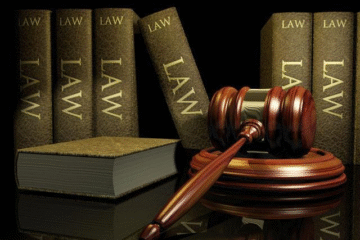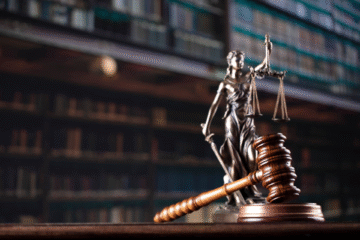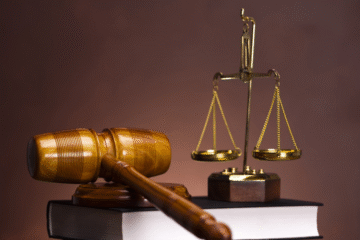
This Article is written by Ananya nadajoshi of Karnataka State Law University, Hubli an intern under Legal Vidhiya
INTRODUCTION
The Advocate’s Act of 1961 is a pivotal piece of legislation governing India’s legal profession. This Act was passed to unify and amend laws about attorneys and provide standards for advocates’ behaviour, bar council formation, and enrolment. Its significance extends to ensuring the regulation and standardisation of the legal profession, fostering a framework that upholds the integrity and dignity of legal practice in India.
This article explores the historical evolution and systematic development that culminated in the Advocates Act, 1961. It traces the path from India’s ancient legal traditions through colonial legal reforms, to the post-independence modernization of the legal profession. Whether you’re a law student, a practising advocate, or a legal researcher, this piece offers an in-depth journey through one of the most defining statutes in Indian legal history.
ORIGINS OF THE LEGAL PROFESSION IN INDIA
Ancient India
Justice in ancient India was primarily administered by tribal leaders or kings. Decisions were made publicly based on customs and religious scriptures. There was no recognized class of legal professionals. Instead, wise elders and priests advised the king on judicial matters, and dispute resolution often followed principles from texts like the Manusmriti[1].
Medieval India
Under Islamic rule, courts known as Qazis administered justice. Litigants appointed “vakils” to represent them, but these vakils acted more like agents and not trained professionals. The legal profession lacked any formal structure or regulation[2].
COLONIAL ERA AND STRUCTURAL FOUNDATIONS
Charter of 1726
The British East India Company introduced structured courts in presidency towns (Bombay, Calcutta, and Madras) through the Charter of 1726. These courts applied English legal procedures, but no formal legal education or regulatory body existed at the time[3].
Charter of 1753
This charter modified the 1726 Charter but failed to address the training and regulation of legal professionals. Many unqualified individuals continued to appear in court[4].
CHARTER OF 1774
Issued by the British Crown, this charter established the Supreme Court in Calcutta. Only British and Irish barristers were allowed to practice, excluding Indian practitioners. The terms “advocate” and “attorney” applied only to trained professionals from Britain[5].
Bengal Regulation Act, 1793
For the first time, Indian Hindus and Muslims could be enrolled as pleaders in the Company’s courts, creating the earliest semblance of a regulated native legal profession[6].
Indian High Courts Act, 1861
Established High Courts in the three presidency towns, marking a major step toward a modern judicial structure. The Act facilitated the gradual unification of different legal practitioner categories[7].
Legal Practitioners Act, 1879
This Act consolidated laws related to pleaders, vakils, and mukhtars. High Courts gained the authority to regulate and discipline legal practitioners under their jurisdiction[8].
Indian Bar Committee, 1923
Chaired by Sir Edward Chamier, this committee recommended creating High Court-level Bar Councils and a single designation of ‘Advocate.’ It opposed forming an All India Bar Council but supported disciplinary powers for High Courts[9].
Indian Bar Councils Act, 1926
This Act established Bar Councils in various High Courts. Councils had limited powers, with most control retained by the judiciary. Membership comprised elected advocates and High Court appointees[10].
POST-INDEPENDENCE REFORMS
All India Bar Committee, 1951[11]
Chaired by Justice S.R. Das, this committee highlighted the inefficiencies of a fragmented profession. It recommended:
- Creation of State and All-India Bar Councils
- Unified designation of legal practitioners as ‘Advocates’
- Self-regulation by Bar Councils with disciplinary authority
- Discontinuation of pleaders and mukhtars
ENACTMENT OF THE ADVOCATES ACT, 1961[12]
To implement the Bar Committee’s recommendations, Parliament passed the Advocates Act in 1961. It came into force on 19 May 1961 and aimed to standardize, regulate, and professionalize legal practice across India.
The key objectives were:
- Abolishing multiple classes of legal practitioners
- Creating uniform qualifications for enrollment
- Establishing autonomous regulatory councils
- Ensuring ethical standards in legal practice
COMPONENTS OF THE ACT
Establishment of Bar Councils[13]
- Bar Council of India (BCI): Apex national body overseeing legal education, ethical norms, and professional conduct.
- State Bar Councils: Manage enrollment, maintain rolls of advocates, and initiate disciplinary action within their jurisdiction.
Enrollment Process
Section 24 specifies eligibility criteria[14]:
- Law degree from a recognized university
- Minimum age of 21
- Successful completion of the All India Bar Examination (AIBE)
Classification of Advocates
Section 16 of the Act divides advocates into[15]:
- Senior Advocates: Designated by the Supreme Court or High Courts for legal acumen and reputation
- Other Advocates: Entitled to practice in all courts, tribunals, and forums
Right to Practice
Section 30 provides enrolled advocates the right to practice across[16]:
- All courts (including Supreme Court)
- Tribunals, authorities, and quasi-judicial forums
Ethical Framework
The BCI Rules govern professional conduct[17]:
- Maintain client confidentiality
- Avoid solicitation of clients
- Uphold integrity before courts
- Prohibit advertising of legal services
Disciplinary Measures
Bar Councils have authority to[18]:
- Investigate complaints against advocates
- Suspend or remove names from the rolls
- Appoint Disciplinary Committees for impartial adjudication
CONTEMPORARY CHALLENGES AND NON-COMPLIANCE
Despite its comprehensive framework, the Advocates Act faces enforcement challenges:
- Fake lawyers: Individuals practice with forged credentials[19]
- Unregulated firms: Offer legal advice without BCI authorization[20]
- Online advertising: Indirect promotions via websites and social media[21]
- Slow redressal: Bar Councils delay action on misconduct complaints[22]
LANDMARK JUDICIAL PRONOUNCEMENTS
Bar Council of Maharashtra v. M.V. Dabholkar (1975)[23]
Supreme Court upheld the BCI’s right to enforce discipline and emphasized ethics in legal practice.
Supreme Court Bar Association v. Union of India (1998)[24]
The Court ruled that disciplinary powers reside solely with the Bar Councils, not the judiciary.
Continuing Relevance of the Act
The Advocates Act remains the bedrock of legal practice in India. Its significance lies in[25]:
- Ensuring uniform entry standards
- Professional self-regulation
- Upholding ethical codes of conduct
- Granting pan-India practice rights to advocates
CONCLUSION
The Advocates Act of 1961 is more than just legislation, it’s the heartbeat of India’s legal community, bringing both structure and dignity to the profession. By unifying practitioners under a single banner, establishing democratic Bar Councils, and delineating clear rights and responsibilities, the Act has empowered countless advocates to approach their work with purpose and pride. Over the decades, it has withstood the evolving needs of society, guiding India’s advocates through tumultuous times[26].
Yet, today’s legal world, marked by increasing globalization, technology disruption, and social accountability, demands more than legacy frameworks. To truly serve justice in the 21st century, the Act calls for thoughtful modernization: one that balances professional autonomy with public trust, ensures ethical standards, and embraces new forms of legal education. In doing so, we honor the founding vision of the Act while forging a path for future generations of lawyers who, as its stewards, carry the torch of justice forward.
As we look toward the future, several critical questions emerge: Should the Bar Council mandate continuing legal education for all advocates? Can artificial intelligence and digital tracking help expedite grievance redressal and improve transparency in the legal field? Are we adequately preparing future lawyers to balance ethics with innovation? These questions urge us to reconsider and reimagine the future of India’s legal profession.
REFERENCES
- Jain, M.P., Indian Legal History (7th ed., LexisNexis 2016) pp. 23–27, 37–42.
- Jain, M.P., Outlines of Indian Legal and Constitutional History [Online] Available at: https://archive.org/details/outlinesofindian00mpja
- Legal Practitioners Act, No. 18 of 1879 (India) (repealed 1961) [Online] Available at: https://indiacode.nic.in/handle/123456789/2361
- The Advocates Act, No. 25 of 1961 (India) [Online] Available at: https://indiacode.nic.in/handle/123456789/1616
- Bar Council of India, History of the Legal Profession in India [Online] Available at: https://www.barcouncilofindia.org/info/history [Accessed 6 July 2025].
- Bar Council of India, Standards of Professional Conduct and Etiquette [Online] Availableat:https://www.barcouncilofindia.org/wp-content/uploads/2010/05/Standards-of-Professional-Conduct-and-Etiquette.pdf[
- Bar Council of India, Public Notice on Unauthorized Legal Practice (2010) [Online] Available at: https://www.barcouncilofindia.org/wp-content/uploads/2010/06/public-notice-unauthorized.pdf
- Arvind, P., Lowering the Bar: How the Bar Council of India Undermines Legal Education in India, The Caravan (1 May 2017) [Online] Available at: https://caravanmagazine.in/perspectives/bar-council-india-undermines-legal-education-india
- King, Stubb & Kasiva, Indian Lawyers Are Banned from Advertising Their Legal Services: Understanding the Bar Council Rules (27 Apr. 2023) [Online] Available at: https://ksandk.com/regulatory/indian-lawyers-no-ads-allowed-per-bar-council-rules/
- Bar Council of Maharashtra v. M.V. Dabholkar, AIR 1975 SC 2092.
- Supreme Court Bar Association v. Union of India, (1998) 4 SCC 409.
- Law Commission of India, Reforms in the Judiciary, Report No. 230 (2009) [Online] Available at: https://lawcommissionofindia.nic.in/reports/report230.pdf [Accessed 6 July 2025].
[1] M.P. Jain, Indian Legal History 23–27 (7th ed. 2016)
[2] Id. at 37–42.
[3] M.P. Jain, Outlines of Indian Legal and Constitutional History, https://archive.org/details/outlinesofindian00mpja (last visited July 6, 2025).
[4] Ibid
[5] Ibid
[6] M.P. Jain, Outlines of Indian Legal and Constitutional History, https://archive.org/details/outlinesofindian00mpja (last visited July 6, 2025) (at 109–110).
[7] Ibid at 122–125
[8] Legal Practitioners Act, No. 18 of 1879 (India) (repealed 1961), https://indiacode.nic.in/handle/123456789/2361 (last visited July 6, 2025).
[9] M.P. Jain, Outlines of Indian Legal and Constitutional History, https://archive.org/details/outlinesofindian00mpja (last visited July 6, 2025) (at 134–136)
[10] Ibid
[11] History of the Legal Profession in India, https://www.barcouncilofindia.org/info/history (last visited July 6, 2025).
[12] The Advocates Act, 1961, https://indiacode.nic.in/handle/123456789/1616 (last visited July 6, 2025).
[13] Bar Council of India, History of the Legal Profession in India, https://www.barcouncilofindia.org/info/history (last visited July 6, 2025)
[14] The Advocates Act, No. 25 of 1961, § 24, India Code, https://indiacode.nic.in/handle/123456789/1616 (last visited July 6, 2025).
[15] The Advocates Act, No. 25 of 1961, § 16, India Code, https://indiacode.nic.in/handle/123456789/1616 (last visited July 6, 2025).
[16] The Advocates Act, No. 25 of 1961, § 30, India Code, https://indiacode.nic.in/handle/123456789/1616 (last visited July 6, 2025).
[17] Bar Council of India, Standards of Professional Conduct and Etiquette, https://www.barcouncilofindia.org/wp-content/uploads/2010/05/Standards-of-Professional-Conduct-and-Etiquette.pdf (last visited July 6, 2025).
[18] The Advocates Act, No. 25 of 1961, §§ 35–36, India Code, https://indiacode.nic.in/handle/123456789/1616 (last visited July 6, 2025)
[19] Arvind, P., Lowering the Bar: How the Bar Council of India Undermines Legal Education in India, https://caravanmagazine.in/perspectives/bar-council-india-undermines-legal-education-india (last visited July 6, 2025)
[20] Bar Council of India, Public Notice on Unauthorized Legal Practice, https://www.barcouncilofindia.org/wp-content/uploads/2010/06/public-notice-unauthorized.pdf (last visited July 6, 2025)
[21] King, Stubb & Kasiva, Indian Lawyers Are Banned from Advertising Their Legal Services: Understanding the Bar Council Rules, https://ksandk.com/regulatory/indian-lawyers-no-ads-allowed-per-bar-council-rules/ (last visited July 6, 2025).
[22] Ibid
[23] Bar Council of Maharashtra v. M.V. Dabholkar, AIR 1975 SC 2092
[24] Supreme Court Bar Association v. Union of India, (1998) 4 SCC 409
[25] Bar Council of India, History of the Legal Profession in India, https://www.barcouncilofindia.org/info/history-of-the-legal-profession/ (last visited July 6, 2025)
[26] Calls for modernization and systemic reform have been echoed by institutions like the Law Commission of India, which highlighted the need for adapting legal frameworks to contemporary realities. See Law Commission of India, Reforms in the Judiciary, Report No. 230, https://lawcommissionofindia.nic.in/reports/report230.pdf (last visited July 6, 2025)
Disclaimer: The materials provided herein are intended solely for informational purposes. Accessing or using the site or the materials does not establish an attorney-client relationship. The information presented on this site is not to be construed as legal or professional advice, and it should not be relied upon for such purposes or used as a substitute for advice from a licensed attorney in your state. Additionally, the viewpoint presented by the author is personal.




0 Comments